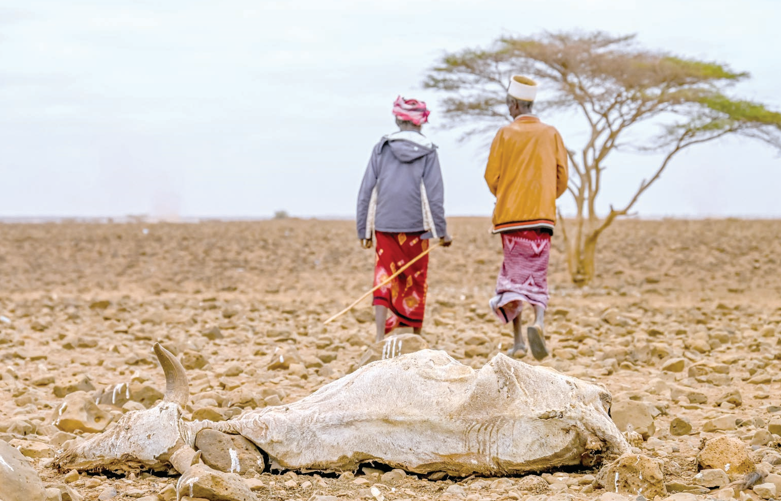Heat to take toll on humans, animals

The Horn of Africa region is likely to witness fatalities from the raging temperatures particularly among the vulnerable populations if the heatwaves being experienced record a slight increase, Intergovernmental Authority on Development (IGAD) has warned.
In its latest update, Igad’s Climate Prediction and Applications Centre (ICPAC) called on governments in the region and East Africa to protect the elderly, infants and children.
The IPAC office also wants those with medical ailments, expectant mothers and outdoor workers shielded from the temperatures that have been going up through the month of February, and now predicted to persist to mid-March.
“This prolonged heatwave is an emerging climate hazard that all stakeholders should take note of, to protect the vulnerable, especially the elderly, infants and children, those with medical ailments, expectant mothers and outdoor workers,” the statement released yesterday at the 69th Greater Horn of Africa Climate Outlook Forum (GHACOF 69).
In the seasonal forecast for March-May (MAM) 2025, ICPAC is projecting a higher likelihood of warmer-than-normal conditions across most parts of the IGAD region.
Negative impacts
During the release of the seasonal forecast, it was emphasised that the region should follow up with forecast updates, especially on the sub-seasonal timescale when most climate hazards manifest.
“With daily maximum temperatures hitting 40 degrees Celsius in parts of South Sudan and Kenya, recent observations indicate a growing risk of negative impacts on human well-being, livestock and socio-economic activities,” the forecast further cautions.
This coincides with the Kenya Meteorological Department’s (KMD) own observations made public at the start of this month, forecasting “warmer than average” temperatures over the entire country.
At the ICPAC, weekly forecasts generated throughout February indicated persistence of warmer than usual temperature anomalies across most parts of the Greater Horn of Africa (GHA).
Analysis of the observed temperatures in February indicated that most areas in South Sudan, Uganda, northern and western Kenya experienced persistence of extreme temperatures.
“The analysis of the average daily maximum temperatures from February 1 to 28 also indicates that much of South Sudan, parts of south-eastern Sudan, northern Kenya, and southern Somalia experienced temperatures exceeding 38°C,” the centre says.
Possible hazards
A heatwave is generally understood as a hot period of at least three consecutive days when temperatures exceed the normal range, usually reaching the highest 10 per cent on record.
According to ICPAC, the possible impacts include increased heat stress to outdoor workers, including those preparing farms for the next season.
“Increased likelihood of wildfires as high temperatures and dry conditions sustain conducive environmental conditions for wildfires,” said ICPAC.
The current heatwaves, ICPAC warns, is likely to worsen respiratory diseases such as Asthma, while elevated levels of heat stress are likely to cause dehydration, exhaustion, fainting, and in extreme cases, heat stroke in humans.
The centre has advised people to pause or minimise intensive activities, especially for outdoor workers, including sportsmen, women, and farmers, are advised to avoid exposure to peak sunshine hours, and focus activities to early morning or late evening.











